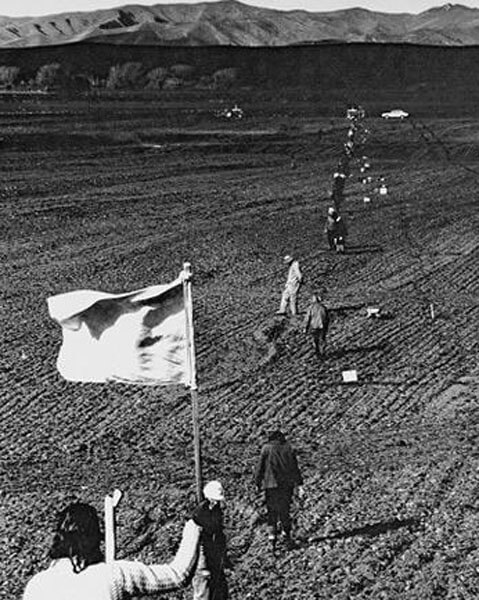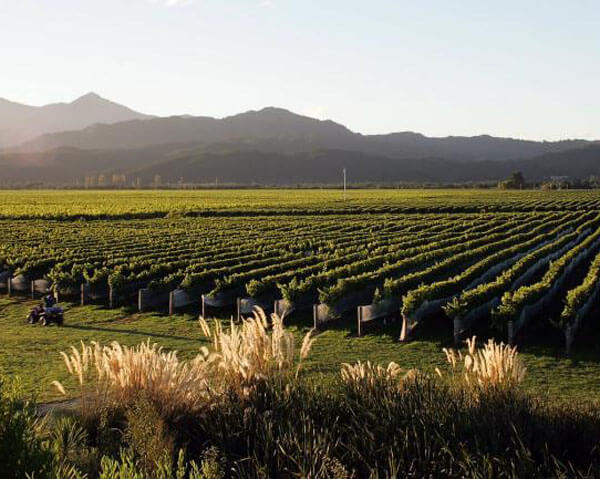
Until the 1970s, the conventional wisdom was that the South Island was too cold to grow grapes. But Brancott Estate's founder, Frank Yukich, whose father Ivan founded Montana Wines near Auckland, went against the grain and explored the opportunity for vineyards on Marlborough farmland, establishing the base on which to build one of New Zealand’s most iconic export industries.
On 24 August 1973, in front of a crowd of local media, politicians and business leaders, the Marlborough wine industry was born. At the time, Yukich made the statement that “wines from here will become world-famous” – and indeed they have, receiving many prestigious awards and accolades around the world.
Some of the original vines that were unsuitable for the cool nights and dry summers and were replaced with Sauvignon Blanc and Pinot Noir in 1975. This decision proved to be an inspired one, setting the scene for a global phenomenon unprecedented in the wine world, with the release in 1979 of the first Marlborough Sauvignon Blanc.
Establishing a new wine region took a lot of experimenting as they learned how to harness the environment to make exceptional wine. From paper-cones to protect vines from frost to locally designed watering equipment, and an army of locals who hand planted 700,000 vines in the first season, their history is founded on Kiwi ingenuity.
Our role in establishing the region was recognised in 1989, when Her Majesty, Queen Elizabeth II visited Brancott Vineyard.

Forty years on, the three original vineyards, Brancott, Fairhall and Renwick continue to supply excellent quality fruit. But Brancott is not resting on their laurels, they recognise the need to continue to care for the land, so they can continue to produce great wines.
Knowing it was essential to think to the future to maintain vineyards, Brancott Estate was a founding member of Sustainable Winegrowing New Zealand (SWNZ) in 1997.
They are globally committed to sustainable practices across all areas of the business. To achieve Zero Waste to landfill by 2020, Brancott Estate continues to audit waste and implement solutions which have included converting to steel vineyard posts, working with suppliers to provide recyclable or reusable packaging, and developing alternative uses for grape marc.
The Brancott Estate Cellar Door and Restaurant, built upon the same viewing platform the Queen visited, was designed with the environment in mind, incorporating recyclable materials, water recycling and design elements to minimise the need for air conditioning.
In their Renwick based Kaituna vineyard, the wetland is being restored. Covering 10 hectares, it is home to many native birds, including tuis and pukekos, as well as the endemic and threatened New Zealand long-finned eels. The vision is to transform the area into its original natural state, including podocarp species. To achieve this, areas of invasive weeds are being tackled in stages and more than 10,000 native plants have been established by the team at the wetland.
They are part of the "Forgotten Corners" project, that sees empty corners of their vineyards planted and turned to create pockets of biodiversity to create corridors for native birds across the Wairau Plain in Marlborough.

Brancott Estate is also a founding sponsor of Marlborough Falcon Trust. The New Zealand falcon (Karearea) is rarer than a kiwi and is New Zealand’s most endangered bird of prey. They have contributed more than half a million dollars to falcon conservation in Marlborough since 2010.
So, what will the next forty years bring? Brancott Estate Chief Winemaker Patrick Materman predicts that Sauvignon Blanc will continue to lead exports, but the style of offerings and the ‘stories’ behind them will become more diverse and engaging to our wine drinkers. In addition, other varieties will gain a greater share of production (and exports) – Pinot Noir, Syrah, Chardonnay and aromatic white varieties.
Regionality will also matter. “We are seeing a growing interest in some of our sub-regional and single-vineyard offerings, as well as what you might call ‘alternative expressions’ – low alcohol, wild fermented, oak-aged and organic wines, are all garnering interest," says Patrick.
“The key for the New Zealand industry is to ensure it doesn’t rest on its laurels. We are a young industry – it's just 40 years since the first Marlborough Sauvignon Blanc was released, and we need to maintain that young, hungry mindset and seek out new varieties, expressions and markets.”
Brancott Estate Chief Winemaker Patrick Materman
In 2011, Brancott Estate launched as a global wine brand replacing Brancott in the United States and Montana in the rest of the world. Brancott Estate has continued to craft striking wines to suit every occasion, including naturally lower alcohol, sparkling, organic, oak-infused and age-worthy expressions of Sauvignon Blanc and Pinot Noir. In addition, they have led the revival of Sauvignon Gris, an almost extinct varietal, now released as part of its classic range.












